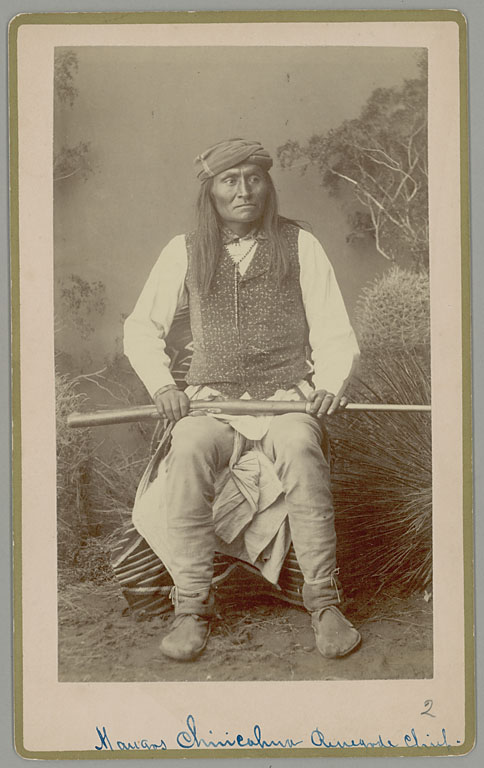Social and Political Organization
|
The extended family was the basic Apache social unit. Except for the Western Apache who were matrilocal (like the Navajo and Puebloan groups by whom they were strongly influenced), post marital residence patterns were generally patrilocal or bilocal. Several extended families would join together to form a local group that would live together during part of the year and join together for various ceremonies and other activities.
The composition of these local groups tended to be quite flexible, with people freely moving back and forth between different groups depending on their personal preference. Above the level of these local groups was the band, which was the largest political unit with which the Apache identified. These bands, in turn, were grouped into the larger entities that are commonly referred to as tribes - that is, the Jicarilla, Western Apache, Mescalero, and Chiricahua groups.
However, it should be stressed that the use of the term "tribes" is really a misnomer—while the Apache recognized distinctions between these groups, they never really had a sense of tribal consciousness and (with the exception of Cochise's short tenure among the Chiricahua) never were politically unified at these socalled tribal levels.
Each local group and band had a leader who acquired the position through respect for his personal traits. These respected men led by persuasion but could not coerce others to follow his lead.
|
|
|
Chief Mangas of the Mimbrenos band of the Chiricahua, 1886. In the late 19th century the U.S. government often signed treaties with such "chiefs," not understanding that the leader had only limited influence, and that even that influence extended over only a small proportion of the tribe. Source - http://sirismm.si.edu/naa/24/apache/02038800.jpg |
|
Click on next page to continue.

